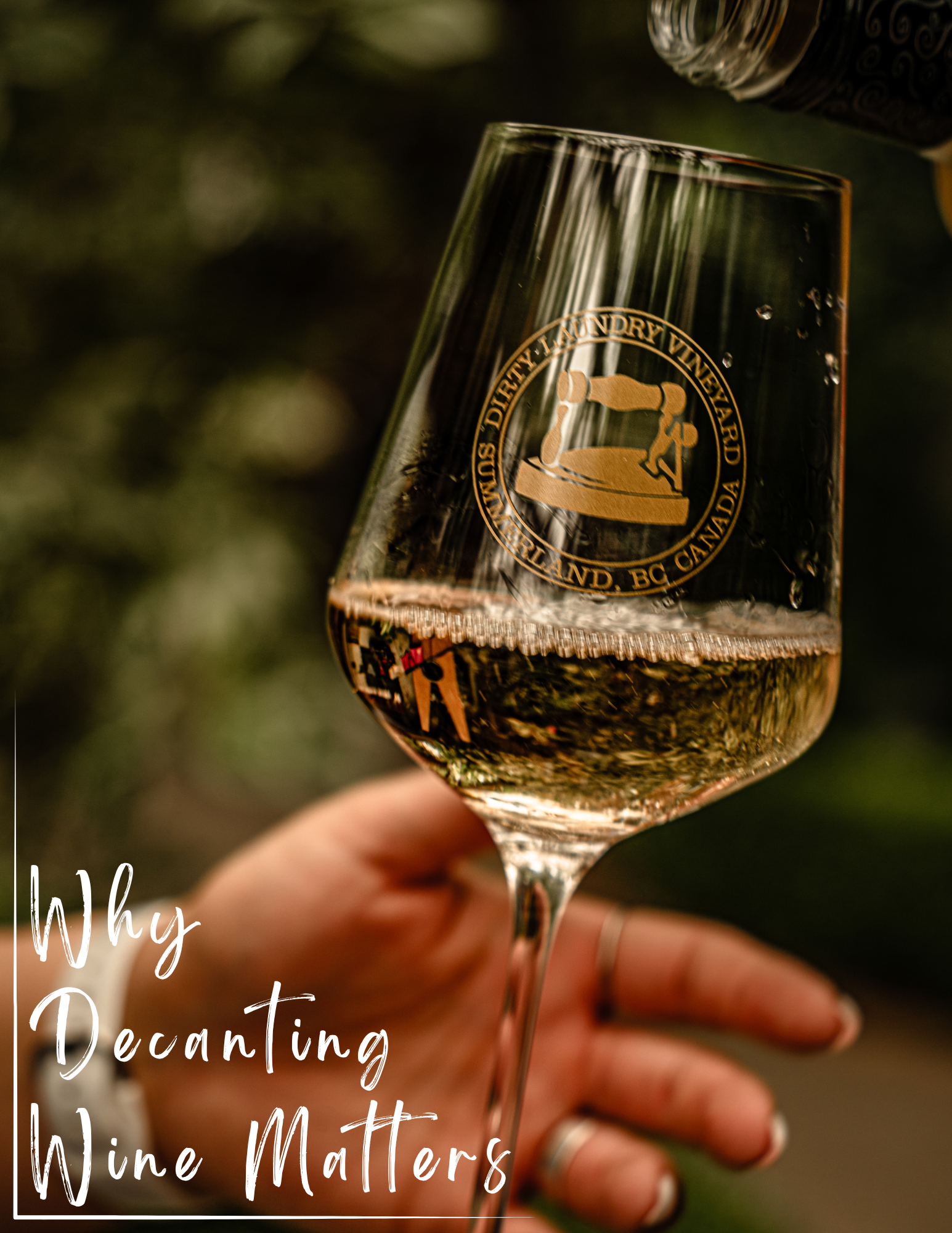What is the Purpose of Decanting Wine?

If you’ve ever dined at a fine restaurant or visited a winery, you’ve probably seen someone slowly pouring wine into a fancy-looking glass vessel — a decanter. It might seem like part of the performance, but decanting is more than just flair. This time-honored ritual serves a real purpose in enhancing your wine experience.
So, what exactly is wine decanting, and why do we do it?
What is Wine Decanting?
Decanting (from the Latin decanthare, meaning “to pour from the edge of a vessel”) is the process of transferring wine from its bottle into another container, a vessel usually made of glass or crystal designed to expose the wine to air. It is a practice that dates back to the Romans, who used bronze, silver, and clay vessels. Glass decanters only became common after the Venetians perfected glassblowing in the 17th century.
While red wines benefit most, some white wines (like Chardonnay) can open up with decanting. It’s not about changing the wine, but helping it show its best side.
There are two main reasons we decant wine:
- To separate sediment.
- To let the wine “breathe.”
In addition, a decanter is often used to enhance the presentation of the wine. Decanters often have elegant designs, making them a stylish way to serve wine at the table.
1. Removing Sediment
As wine ages, especially red wines and vintage ports, natural sediments (like tannins and grape solids) can settle at the bottom of the bottle. These sediments are harmless but can add a gritty texture and bitter flavour if poured into your glass. By carefully pouring the wine into a decanter, you leave the sediment behind in the bottle. This is especially useful for older wines that have spent years resting in the cellar.
2. Letting the Wine Breathe
The second — and often more common — reason to decant wine is aeration. When wine is exposed to oxygen, it softens the harsh edges, opening the wine up and releasing its aromas and flavours. Note that uncorking a bottle and letting it sit doesn’t aerate the wine much because the opening of the bottleneck is too small and not enough space exists in the bottle to introduce more oxygen to the wine. Simply put, breathing in the bottle is a myth and decanting is much more effective!
How to Properly Use a Decanter for Both Young and Old Wines
For young wines (generally under 5 years old), the goal is aeration — softening tannins and opening up aromas.
How to do it:
- Open the bottle and pour the wine vigorously into a wide-bottomed decanter.
- In general, you should let the wine sit in the decanter for at least 30 minutes. Big, bold reds (like
Cabernet Sauvignon,
Syrah, or
Malbec) may benefit from longer (up to an hour). Even some everyday white wines and rosés can benefit from a short decanting, especially if they’re high in acidity or have been under screwcap and need a little oxygen to awaken.
- Taste as you go — once the wine smells and tastes more expressive, it’s ready to serve.
For old wines (usually 10+ years old, especially reds), the goal is sediment removal and gentle aeration (too much oxygen can ruin fragile flavours).
How to do it:
- Stand the bottle upright for a few hours (or even overnight) before decanting, so sediment settles to the bottom.
- In a dim light (a candle or flashlight works), slowly pour the wine into a decanter with a narrow neck, keeping the bottle angled so sediment stays behind.
- Stop pouring once you see sediment nearing the neck of the bottle — usually a small amount of wine is left behind.
- Serve the wine soon after decanting — very old or delicate wines can actually lose their character if left too long in a decanter, fading in as little as 30 minutes.
When to Decant and When Not to Decant
Use this quick reference guide to determine when you should decant wine, and for how long, and when decanting is not needed or recommended.
When to decant:
- Young, bold, tannic reds (Cabernet Sauvignon, Syrah, Malbec) – decant for 1-3 hours to soften harsh edges and open aromas.
- Medium-bodied reds (Merlot, Zinfandel, Grenache) – a short decant (20–40 min) enhances fruitiness.
- Old reds with sediment (Bordeaux, Burgundy, Rioja, Barolo, Vintage Port) – a gentle decant of 10-30 minutes max just before serving to remove grit.
- Some whites & orange wines (Chardonnay, Viognier, natural/orange wines) – a quick decant of 15-30 minutes to release complexity.
- Closed or “tight” wines (any wine that smells muted or tastes flat at first sip) – oxygen helps bring it alive.
When not to decant:
- Delicate, very old wines (20+ years) – may fade quickly; only decant right before serving if needed for sediment.
- Light-bodied reds (Pinot Noir, Gamay/Beaujolais, many natural wines) – often lose nuance with too much air.
- Most sparkling wines (Champagne, Prosecco, Cava) – decanting robs them of bubbles (except rare cases where sommeliers use it to soften aggressive fizz).
- Already “open” wines – if aromas leap out immediately after pouring, decanting isn’t necessary.
Do You Need a Fancy Decanter?
No. While elegant glass decanters can enhance the experience, the main goal is exposing wine to air. If you don’t have a decanter, you can pour wine into any clean glass jug or pitcher, pour it back and forth between two containers, or even swirl it in your glass. These methods can achieve some of the same effects without a decanter.
That said, a well-designed decanter adds a touch of ritual and style to the moment — and for many wine lovers, that’s part of the joy.
Wine decanters come in many shapes and sizes:
- Wide-bottomed decanters maximize oxygen exposure, which is great for young wines.
- Narrow, tall decanters are better for delicate older wines where too much oxygen could harm the flavour.
Final Thoughts
Decanting is a small step that can make a big difference in how a wine tastes and feels. Whether you’re opening a special aged bottle or just elevating your weeknight red, taking a few minutes to decant can unlock a more expressive, enjoyable wine experience.
So, next time you open a bottle, give it some air — your taste buds will thank you.

